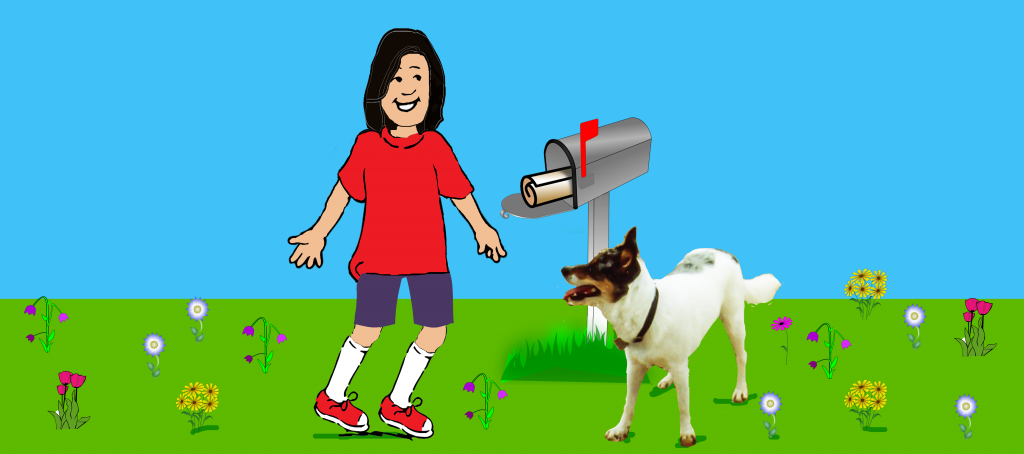
DOG ON A LOG Books are a systematic, decodable book series. They are written for anyone learning to read with phonics including learners with dyslexia.
a systematic, decodable book series
Decodable means that if your child or adult learner knows the phonics rules and the sight words in a book, they will be able to read it. Most of the words they will be able to sound out. The rest they will have learned as sight words. They may struggle with the book, but their frustrations will likely be much lower and their success will probably be much higher than if they tried to read most books.
Systematic means new phonics rules are gradually taught once the original phonics rules are understood. DOG ON A LOG Books introduces 1 to 3 new rules in each step of books. This allows a learner to practice reading a Step of books as many times as necessary to reach a level of success and comfort. When they are ready to move on, they are taught the phonics rules in the next step. Once they understand the new rules, it is time to start reading the next Step of books. With each following step the learner will gain more and more abilities with the phonics they have previously been taught and practiced as well as the newly introduced rules.
Systematic phonics is the best way for any student to learn to read. The National Reading Panel reviewed 100,000 studies that examined reading instruction. They stated, “Systematic and explicit phonics instruction is more effective than non-systematic or no phonics instruction.” In other words, the best way to learn to read is to be taught with a systematic phonics program. You can read their booklet here.
Learners with Dyslexia have the greatest success learning to read using an Orton Gillingham approach. Orton Gillingham programs use systematic phonics steps with lots of repetition and multi-sensory methods. DOG ON A LOG Books will work for anyone learning to read with phonics, especially learners with dyslexia. You can read about Orton Gillingham here.
Step 1 books of the DOG ON A LOG Books series have 31 sounds. They start with short vowel sounds, primary consonant sounds, and 6 digraph sounds. A digraph is two letters that make one sound such as ch or sh. For storytelling purposes, Possessive ‘s is also used. There are 24 sight words in Step 1. Children and adult learners should probably practice these words before reading the books so they will not be surprised and/or frustrated when they encounter them. With the exception of a couple sight words and words with Possessive ‘s, all words in Step 1 have two or three sounds.
Step 2 has all the same sound as Step 1. Step 2 introduces Suffix -s. This makes some word have four sounds. For storytelling purposes this allows for much more complex, more mature seeming stories because of the action words (verbs) that can now be included. The other new rules are the “all” sound and double f, l, s, and z after short vowels. An additional 23 sight words are added to the prior 24 sight words. These added words also add for more advanced stories.
Each Step after this adds more phonics and sight words. The stories become more complex and usually longer with each passing step. Characters and places are met and met again as the series progresses. However, you can start anywhere in the series depending on your learner’s needs. Each book is written to tell a complete story and there is no need to have read an earlier book to know what is happening. Jan and often her sister Gret are in at least one book per step. The Hat And Bug Shop is mentioned in various books as are other characters and places. And, of course Tup, The Dog On The Log, has adventures in many books.

a systematic, decodable book series

